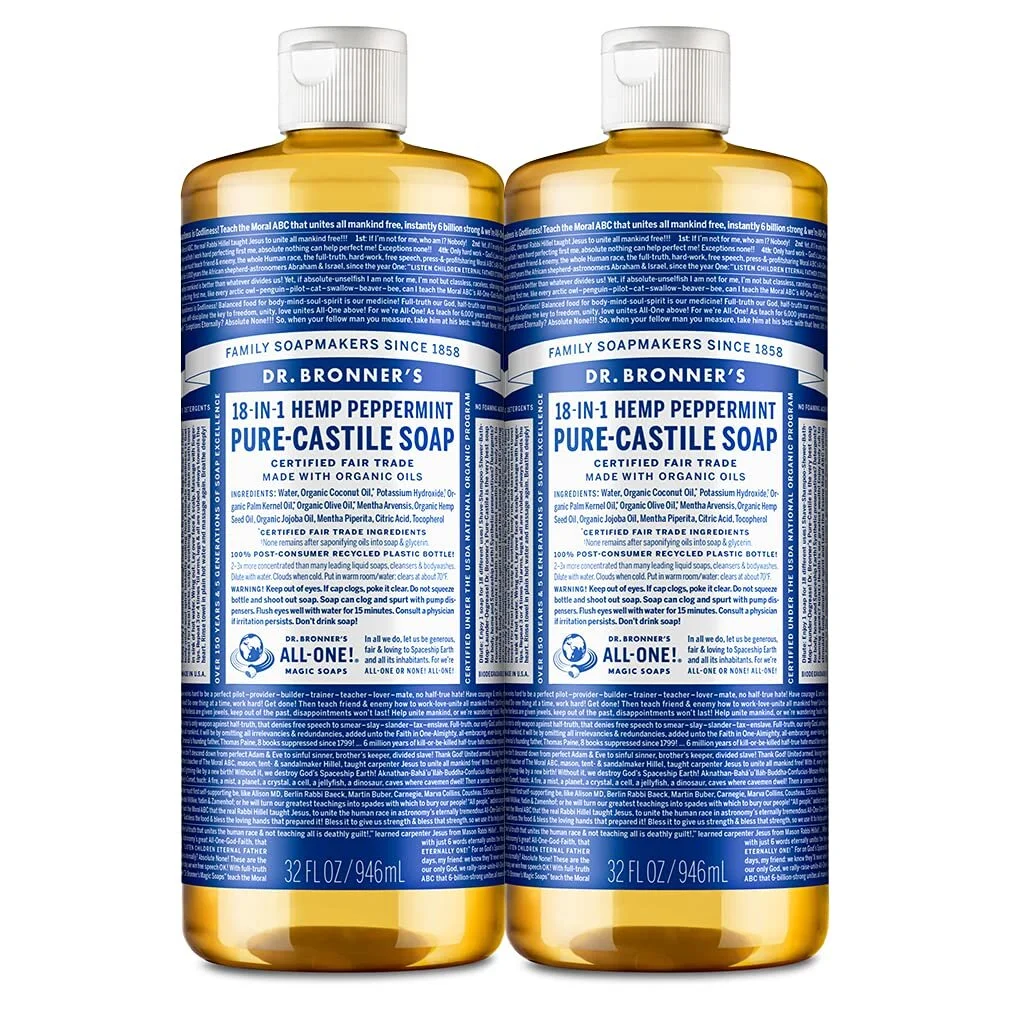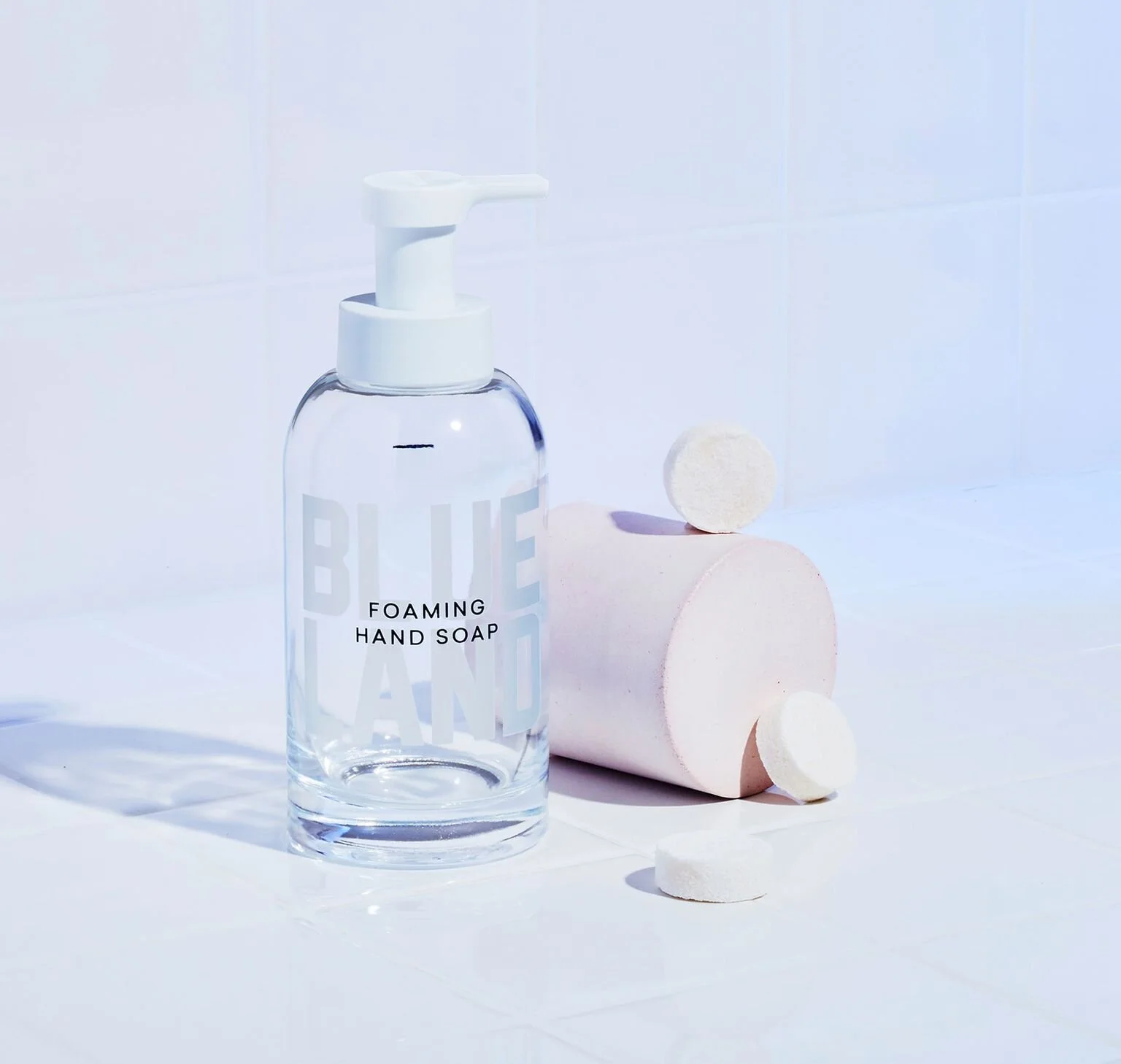A Wise Guide to More Sustainable Liquid Hand Soap
While there’s no such thing as “sustainable” liquid hand soap, here’s what to be wise on when you’re stocking up.
The past year and a half of COVID life has taught us many things, the least existential of which is to wash our damn hands. Hand soap has become an increasingly important personal care product to keep on every sink basin.
According to Fior Markets, the global liquid hand soap market is expected to more than double over the 8 years between 2019 and 2027, in large part due to increasing coronavirus cases, growing consumer awareness towards health and hygiene practices, and changing preferences towards liquid hand soap over bar soap.
Our collective love of hand soap, however, does have some setbacks, including the presence of toxic ingredients and excessive use of plastic for packaging. Let’s dig into those problematic aspects of the liquid hand soap industry and how you can choose wisely next time you stock up.
What to be wise on:Liquid hand soap is formulated to clean and wash hands, thereby reducing the exchange of germs between users. What are the building blocks of this stuff, which we all (hopefully) use at least a handful of times a day?
The basic building blocks of liquid hand soap are water and fat (think coconut, olive, soy, palm, castor, avocado, almond, and hemp oils, or cocoa and shea butter). Then there are ingredients that make the soap, well, soap. Lye (like potassium hydroxide) can be used and is pretty innocuous. Surfactants, however, are generally the most harmful ingredients contained in soaps. They’re the component that makes soap lather, and they basically attach themselves to filth on your hands and carry that filth away when you rinse them with water.
The factors to consider: Ingredients
There are a few key ingredients to be aware of:
Water is the main ingredient in liquid hand soap. Spoiler alert - your sink already has it. For this reason, it’s super inefficient to ship water-heavy products. That’s why we love concentrated formulas like Dr. Bronner’s. It contains a fraction of the amount of water that it actually needs to work properly, saving plastic in packaging as well as weight in shipping and transportation. Just dilute with water as instructed and you’re good to go. If you really want to go the extra mile, checkout hand soap tablets like these. They contain no water so they’re super lightweight, and they don’t require any bulky packaging.
Palm oil is one of the oils commonly used in liquid hand soaps. In fact, of the 187 liquid hand soaps that we’ve rated, 69% of them contain palm oil or ingredients that may be derived from palm oil. About 66 million tons of the stuff are produced annually, making it the most common vegetable oil on Earth. It is a very productive crop, offering greater yield at a lower production cost than any other vegetable oil. The bad news is, palm plantations (which have become pervasive in the Amazon) destroy biodiversity and leave animals (especially orangutans) without shelter and food. Indigenous people also lose the ability to control their food supplies since they cannot hunt and gather traditional foods in areas where the forest has been destroyed. Unfortunately, “sustainable” palm oil doesn’t really exist, despite what the Roundtable on Sustainable Palm Oil says. Safe to say, we recommend choosing hand soaps made with alternative oils like coconut or olive, if possible.
Ethoxylated ingredients, like sodium laureth sulfate. These ingredients can be contaminated with PEGs and 1,4-dioxane, two toxic chemicals linked to various cancers. When a chemical contains “eth”, that’s an indication that it has undergone ethoxylation.
Isothiazolinone preservatives like methylisothiazolinone and methylchloroisothiazolinone have antimicrobial properties that make them popular in hand soaps. However, they are known irritants linked to contact dermatitis in humans, and are highly toxic to freshwater and marine organisms.
Parabens like ethylparaben and isopropylparaben are preservatives found in hand soaps. A 2006 study found parabens in nearly all urine samples from U.S. adults, regardless of demographic. They have been associated with endocrine disruption in humans, and certain kinds can kill coral, even at low levels of exposure.
Triclosan is an antimicrobial agent often added to hand soaps. It is resistant to degradation, which leads to bioaccumulation (aka a build up of chemicals in fish) when it is washed down the drain. Since up to 96% of triclosan in consumer products is rinsed down the drain, this is problematic. It can disrupt the reproductive processes of aquatic species and it is considered a major environmental and public health hazard. Epidemiology studies indicate that significant levels of triclosan are detected in body fluids in all human age groups, and that it has adverse effects on endocrine and thyroid function.
Packaging
Like many products that we use these days, liquid hand soap results in a ton of plastic waste. High density polyethylene (HDPE) is commonly used to make soap containers and thankfully, it is one of the most widely recycled types of plastic. While under 9% of all plastics in the U.S. are recycled, the recycling rate for HDPE is almost 30%. If the packaging of your soap is labeled “HDPE”, rinse it out and make sure it is placed in the correct bin. When in doubt, follow your local municipality rules to figure out what you can recycle and how to do it correctly. While you may be able to recycle your soap dispenser bottles, don’t try and recycle the pumps. Most contain metal springs which can damage machinery in the plastic recycling stream, so throw those in the trash.
Instead of buying individual-sized disposable hand soap dispensers, why not buy in bulk and reuse a dispenser that you already have? Buying in bulk is almost always cheaper per unit, though it is also a larger upfront cost. You can reduce plastic waste by buying in bulk, but if you have a lot of something, you’re also more prone to overusing it. Do what works for you based on your income level and lifestyle.
A few takeaways: Next time you buy hand soap, try to avoid the nasties mentioned above and buy in bulk if you can. When you’re done with your soap packaging, rinse and recycle the HDPE bottles and trash the pumps since those aren’t recyclable.
Below, we’ve listed some of our favorite liquid hand soaps based on price-point, ingredients, and customer reviews.
Dr. Bronner’s Pure-Castile Liquid Soap ConcentrateCost: $0.16 per oz (if mixed with 2 parts water)
What we loveConcentrated formula = less water weight in shipping and handling, and less plastic required for packaging. On top of that, Dr. Bronner’s uses 100% recycled and recyclable plastic packaging. 90% of customers (nearly 18k people) love this soap for its invigorating peppermint scent, the way it leaves their skin feeling squeaky clean, and the fact that a little goes a long way.
What could be better: This soap contains palm kernel oil, which as we mentioned above, is bad news. Some customers wish it had a more viscous consistency, and say it can leave their skin feeling dry.
Blueland Hand Soap TabletsCost: $0.22 per oz
What we love:These single-dose hand soap tablets reduce the amount of fuel in shipping and transportation (because tablets weigh less!) and eliminate single-use dispensers that inevitably end up in landfills and oceans. 83% of customers (nearly 11.5k people) love this soap for its easy-to-store, low-waste tablets, and the way it cleans without drying the skin.
What could be better: The tablets contain “fragrance,” which is often code for a host of nasty chemicals. Fortunately, Blueland’s fragrances are free of Prop 65 ingredients, which are known to be toxic. Some customers say that it doesn't lather as much as they'd like.
Cleancult Liquid Hand SoapCost: $0.31 per oz
What we love:These refill cartons, made of 80% paper, 15% PE, and 5% aluminum, cut down on plastic waste associated with traditional hand soap dispensers and are accepted at most recycling centers. 75% of customers love this soap for its low-plastic refill containers, its fragrance, and the way it doesn’t dry out sensitive skin.
What could be better: Some customers say this soap is too viscous and doesn’t rinse off easily.
EO Hand SoapCost: $0.34 per oz
What we love:This soap is made by a certified B Corp at a family-owned factory in California. 88% of customers love it, and say it’s great for sensitive skin and leaves no residue.
What could be better: This soap is expensive, and some customers say it’s too watery and doesn’t have a great scent.





